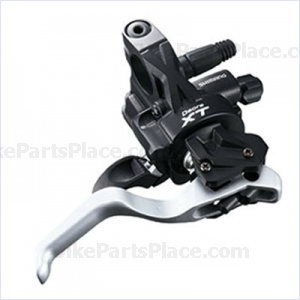
- Shimano’s top end components are Dura-Ace for road and XTR for mountain
- Lesser groups are often mechanically similar
- Durability increases as you go farther down the hierarchy
The next time you go into a bike shop, take a look at the components on most of the bikes on the floor. There’s a good bet almost all of them will be outfitted with Shimano bike parts. Quite often, what distinguishes one bike over another is the component group, not the frame.
Founded in Japan in 1921, Shimano has become the world’s largest supplier of bicycle components. From shifters and derailleurs to chains, cassettes and more, Shimano has many different product lines.
Shimano bike parts are divided into two main distinctions: road and mountain. From there, each category is further divided into a hierarchy of component classes. Though prices and materials are different, each class is often mechanically similar (if not identical) to the one above or below it.
On the road side, it starts at the top with Dura-Ace. Shimano’s most expensive and popular group, Dura-Ace is the choice of many professional cycling teams. Lance Armstrong rode the components to seven consecutive Tour de France victories starting in 1999. The current generation of Dura-Ace carries a model number of 7900. It replaced Dura-Ace 7800 in 2008.
Below Dura-Ace is Ultegra, which has been redesigned in the mold of Dura-Ace 7900. The Ultegra 6700 group will be bright, polished silver, much like past Ultegra lines. The group is mechanically identical to Dura-Ace, but doesn’t feature all of the lightweight parts in demand by pro cyclists. Over its history, Ultegra has proven to be more durable than Dura-Ace.
For about two years, ending in early 2009, Shimano made a group called Ultegra SL. Noted by its dark gray finish, Ultegra SL had a few weight-saving features over standard Ultegra that put it closer to Dura-Ace weight.
The third Shimano road line is called 105. It’s typically installed on mid-range bikes – usually with aluminum frames – and with 10-speed construction, it’s mechanically identical to Dura-Ace and Ultegra. Weight and durability are both increased due to heavier construction.
Under 105 are Tiagra and Sora. Tiagra is mechanically similar to the 10-speed lines, but comes only in nine-speed configuration. The 2009 version of Sora is available in eight or nine speed and has a different shifting mechanism than the other groups. Both are installed on entry-level road bikes.
On the mountain side, XTR is at the peak. Like Dura-Ace, XTR is the choice of many pro racers for its lightweight construction and perfect performance. XTR was redesigned in 2007, so small changes may be on the way soon.
Deore XT is Shimano’s original mountain group – it debuted in 1982. With a few small changes from XTR, Deore XT is a high-quality system found on all but the most expensive high-end bikes.
SLX is next, third in Shimano’s mountain range. Borne from Deore LX, SLX is a full mountain group not unlike Deore XT or XTR. It falls into a similar level as 105 – mechanically identical, but at a more budget-friendly price.
The Deore group takes budget-friendly a step further. Often found on entry-level bikes, Deore takes a few cues from Shimano’s high-end designs. Below Deore is Alivio, which is also found on entry-level bikes, as well as hybrids. Both groups are solid, no-frills performers.
Tags: shimano bike parts


 Shopping
Shopping



I drool every time I go into a bike shop and see Shimano parts, gleaming in the light and tempting me. I have read about Lance Armstrong’s preference for them (doesn’t he have an endorsement deal with them?), but I don’t do that kind of serious riding to justify the expenditure. One day, when I’m rich and famous (any day now) and money is no object I will definitely step up to the plate and equip my ride with Dura Ace. I’m sure they are top-notch.